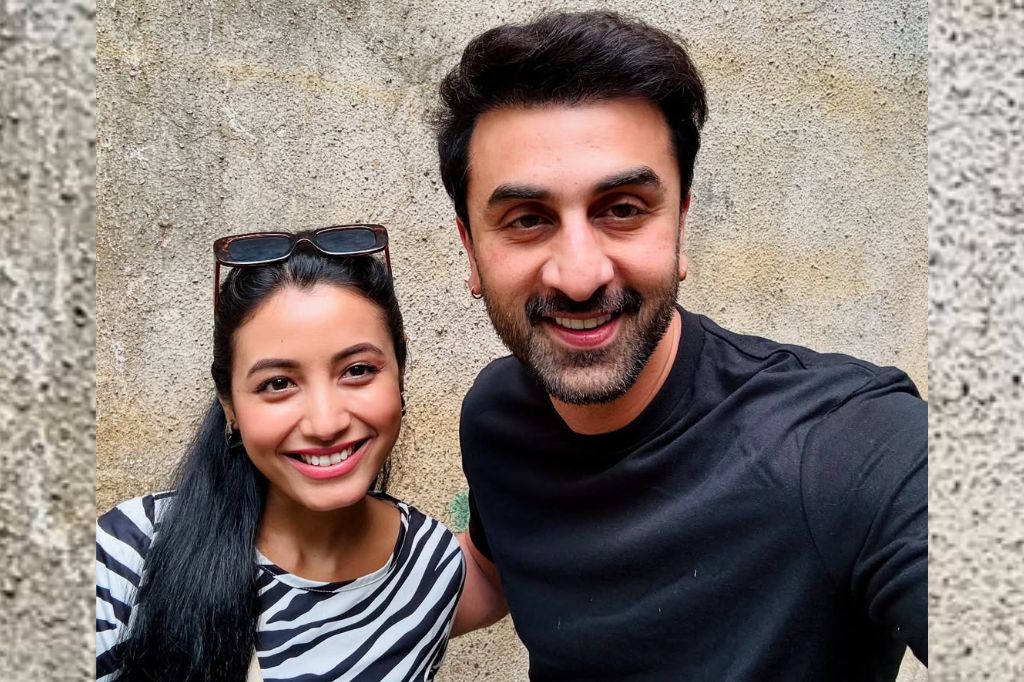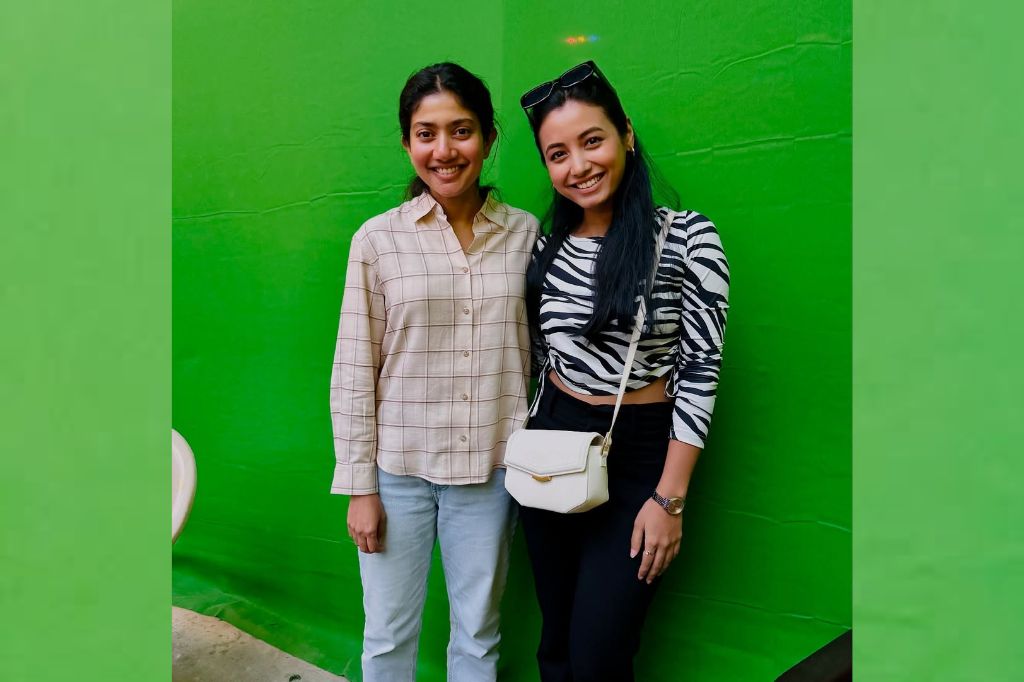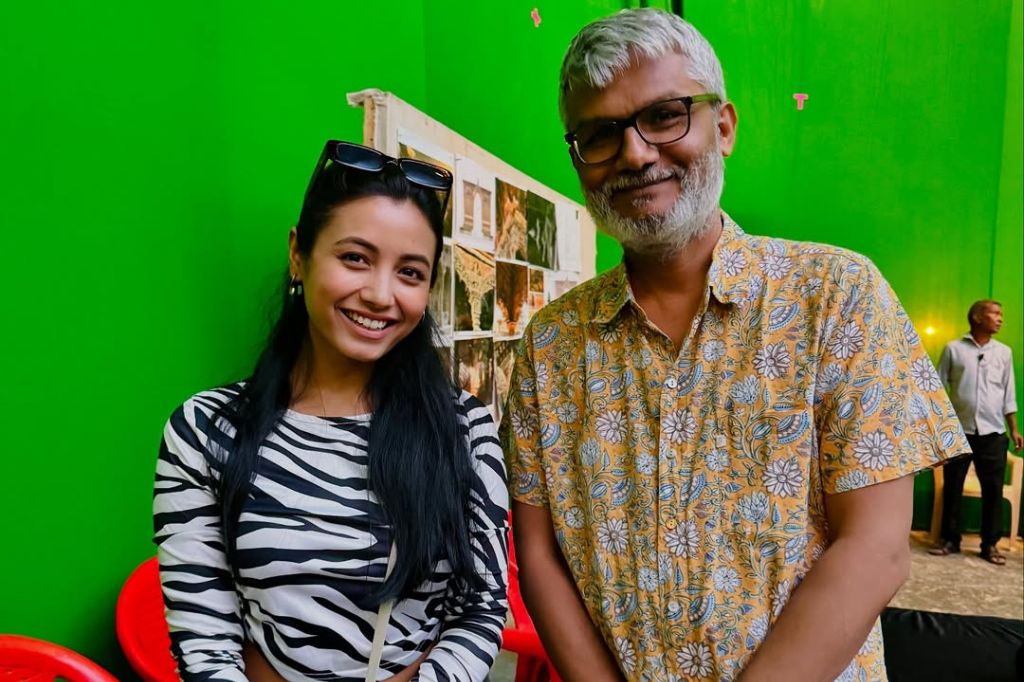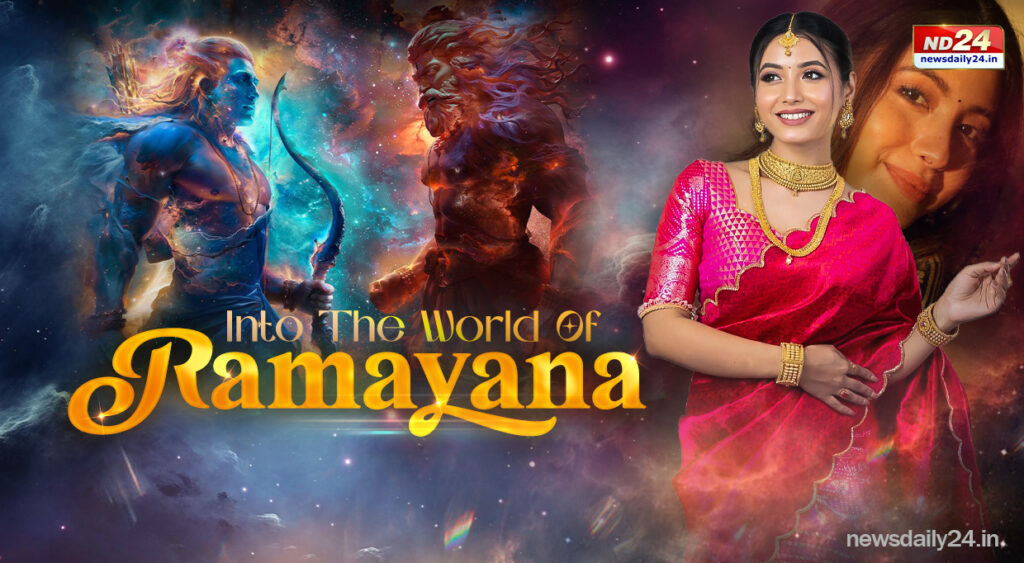In the ever-evolving landscape of Indian cinema, where grandeur often intertwines with mythology, a new face is quietly making her mark – Surabhi Das. The Assamese actress, who first captured hearts as Nima Denzongpa, is now stepping into a project of epic proportions: Nitesh Tiwari’s cinematic adaptation of the Ramayana.
Born in Nalbari, Assam, Surabhi’s early life was far removed from film sets and the glare of celebrity. Raised in Guwahati, her first brush with acting came through the Assamese serial Indradhanu, where she played a supporting role. Though modest, this opportunity ignited her passion for performance. She gained popularity soon after in Assamese music videos like Sui Jaai, Tumake Napale, and Tumi Jun, where her expressive screen presence began attracting attention. The real turning point in her regional career came in 2019 with Parineeta, a daily soap aired in Assam, where she played the lead. The show was a hit and made her a household name in the Assamese television circuit. Her portrayal was marked by emotional depth and relatability, earning her a devoted local fanbase.
In 2021, Surabhi made a significant leap to Hindi television with Nima Denzongpa on Colors TV, marking her national debut. Beyond television, she has also featured in web projects and ad shoots.

Surabhi is now gearing up for the most significant project of her career — a role in Nitesh Tiwari’s highly anticipated epic, Ramayana, which features Ranbir Kapoor, Sai Pallavi, and Yash in lead roles. While her appearance in the film is brief, it marks a meaningful entry into Bollywood for the actress.
In Ramayana, slated for a grand Diwali 2026 release, Surabhi will be seen portraying one of Sita’s sisters. The film’s scale and star-studded cast make it a landmark moment for her, even with a limited role, signaling a promising new chapter in her acting journey.
In an exclusive conversation, Surabhi spoke about the profound significance of making her Bollywood debut with a film as iconic as Ramayana.
Q. What was your first reaction when you were offered a role in Ramayana?
A. I was informed last year that I was shortlisted, and later they confirmed I was locked for the role. I was thrilled but couldn’t share it publicly due to confidentiality – only my family and a few close friends knew. It’s an honour to be part of such a historic project. I got the role through a proper audition at Mukesh Chhabra Casting Company – nothing happens in Mumbai without one!
Q. Can you tell us about the character you’re portraying and how you connect with her personally?
A. I can’t reveal too much right now, as it’s a small part. There have been several reports about my role in Ramayana. I’m playing one of Sita’s sister. When you’re on set, the atmosphere is so immersive that you naturally slip into character – it feels like stepping into another world.
Q. How did you first react when you found out you’d be sharing the screen with Ranbir Kapoor? What’s one thing you learned from observing or working with him?
A. It felt like a dream come true to be on the same set as Ranbir Kapoor, especially for my first film – even if it’s a small role, it’s a huge moment for me. When I shot my first scene with him, it took a second to sink in. It truly felt magical.
One thing I observed about him is how deeply serious he becomes when he’s in character. But during rehearsals, he was very warm, kind, and fun-loving. Watching him switch so effortlessly between the two taught me a lot about focus and professionalism.

Q. Working alongside someone as acclaimed as Sai Pallavi – what has that experience been like?
A. Sai Pallavi is even more humble and down-to-earth than people imagine. We didn’t have many scenes together, but whenever we interacted, she was incredibly warm and kind. On the last day of our shoot, we had a conversation about the South industry, and she spoke with such patience and grace.
Even though our time on set was brief, she made a lasting impression. Since the mythological costumes were quite heavy, she would guide us on how to manage them before the scenes. That kind of support meant a lot.
Q. Did you have any scenes together with Sai Pallavi? How did you both prepare for your roles?
A. Yes, I did have scenes with Sai Pallavi, who is playing the role of Mata Sita. Her preparation was very detailed and dedicated. Whenever we had scenes together, we were usually called a day in advance for rehearsals.
We practiced a lot before shooting each scene. Since we typically shot only one or two scenes a day, we had plenty of time to prepare and really get into character. That process helped us perform with more depth and confidence.
Q. How did you prepare yourself – emotionally, spiritually, or physically – to embody this role?
A. I’ve always been deeply interested in Ramayana and Mahabharata. I’ve read about them since childhood, so emotionally and spiritually, I already had a strong connection with the story and its characters. To understand my role better, I did a lot of research online -whatever information was available about my character, I tried to learn. I also spoke to people around me who are well-versed in the epics to gain more insight.
Spiritually, I’m someone who already believes in God and the essence of these characters, so that belief helped me connect naturally with the role. Physically, as an actor, it’s important to stay fit, so I followed a strict diet and workout routine. Though I did gain some weight during that period, I remained committed to preparing in every way I could.
Q. How different is acting in a mythological series compared to your earlier projects?
A. Working on a mythological series like Ramayana is very different from my previous projects. The most noticeable difference was the scale – the sets were massive, and everything was arranged with incredible detail and precision. From pre-production to costumes, everything was handled systematically and professionally. It was truly impressive.
In regular TV serials or ads, the focus is often on completing a certain amount of footage -15 or 20 minutes – by the end of the day. Scenes are shot quickly, and there’s less time to focus on whether the visuals are aesthetically pleasing or whether the actors are completely in character. That’s mostly because of tight budgets and timelines.
Ramayana, on the other hand, had one of the highest budgets, so they had the luxury of time, money, and manpower. The sets were filled with people – junior artists, body doubles, and a large featured cast. It was a grand, well-organized production, unlike anything I’ve experienced before. The difference was huge, both in scale and creative process.
Q. Has working on Ramayana changed your understanding or appreciation of Indian mythology?
A. The way the story was presented stayed true to the original – it wasn’t altered or dramatized unnecessarily. What I found interesting was the introduction of several characters I wasn’t familiar with before. Earlier, like most people, I only knew the main characters. But while working on this, I got to discover many lesser-known figures and stories. The Ramayana is being released in two parts – one around this Diwali and the next during Diwali 2027 – so the makers have tried to include as many characters and details as possible. That’s what makes it special. It’s a beautiful way to help people understand the Ramayana more deeply.
Q. What aspects of your character do you think modern audiences will resonate with?
A. That’s a very deep question. Honestly, I’m playing a very small role in the larger narrative, so it’s not a character that stands out in the way Rama or Sita do. My character isn’t modern – she’s rooted in the world of the Ramayana, which makes her quite distant from today’s context. So I’m not sure if the audience will directly resonate with her. But still, every character in the Ramayana plays a part in conveying timeless values, and maybe, in some subtle way, that will connect with people.
Q. You’ve done contemporary roles before – do you now see yourself exploring more historical or mythological characters?
A. To be honest, when you’re in Mumbai as a struggling actor, you’re constantly trying – just to get noticed, just to get work. Doing a part in Ramayana doesn’t mean casting directors will suddenly start approaching me only for mythological or historical roles. I don’t have a set plan like, ‘I want to do this genre or that genre.’ I just want to do good work.
For me, what matters is the character’s importance in the story. If the character can be removed from the plot without affecting the narrative, then it’s not something I’d be interested in. But if the role is primary or parallel to the storyline – regardless of whether it’s mythological, historical, or contemporary – that’s what draws me.
I know I’m still a nobody in the industry. I have no godfather, no big connections, so the only way forward for me is through auditions. And I’m okay with that. I just want to play roles that matter to the story – that’s my only focus. I don’t think any actor can really afford to say, ‘I’ll only do this kind of role.’
Q. How has this experience impacted your personal or professional growth?
A. To be honest, the real impact on my professional growth will only be clear once the film releases. We shot Ramayanalast year, but we didn’t announce anything until the trailer came out. And even in the trailer, there’s just a one-second glimpse of Ram and Ravaan – so it’s too early to say how this project has changed my career.
What I can say is that being part of a film like Ramayana definitely adds weight to your profile. It makes people take you more seriously. Now, when I mention this project during auditions or conversations, I can see the difference. People actually respond – they consider me. And that in itself feels like a step forward.
I really hope this film opens more doors. That’s what I’m looking forward to the most.

Q. What’s the one thing you do to get into character before a shoot?
A. Whenever I go for a shoot, I always listen to the Hanuman Chalisa – and not just that, but a mix of devotional songs. It really helps me ground myself and feel more connected, mentally and emotionally. And once I reach the set and slip into the outfit, everything starts falling into place – the look, the vibe, the energy – it all helps me flow naturally into the character.
Q. After Ramayana, what kind of stories are you drawn to next?
A. Honestly, at this point in my career, I don’t really have the privilege of choosing stories. Right now, it’s more about what’s being offered to me rather than what I want to pursue. It’s not a situation where I can say, ‘I’ll do this’ or ‘I won’t do that.’
What matters most to me now is whether the character is significant – if I have a strong presence or an important role in the film or series. If that’s the case, then I’m open to whatever the story may be. It’s the strength of the character that draws me in, more than the genre or format.
Q. What would you tell young actors from Assam or the Northeast?
A. If you look at Northeastern, today’s casting space is more open – your natural Hindi, even with an accent, is accepted in many OTT projects. But if you don’t have a defined regional look, like me, fluency in Hindi becomes essential. Looks play a big role, and sometimes, no matter your talent, you can miss out just because you don’t ‘fit’ a part visually.
That’s why you need to be prepared – emotionally and financially. Mumbai is tough, and survival here takes more than dreams. You need savings or family support, because it might take time before work comes in.
Above all, stay consistent. Hard work, patience and the ability to keep going even when nothing seems to work – that’s what will carry you forward.







